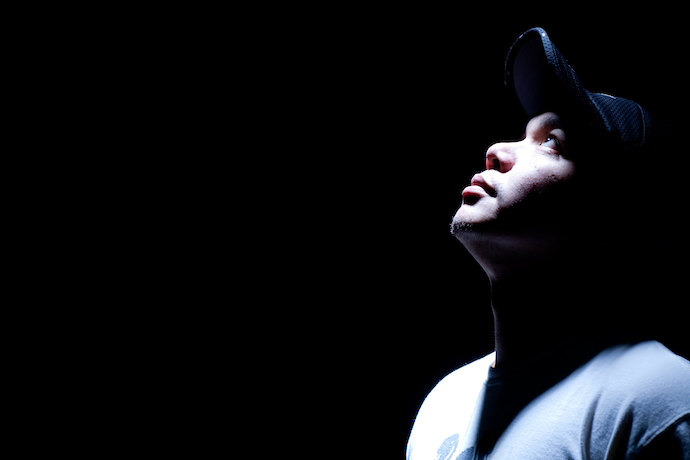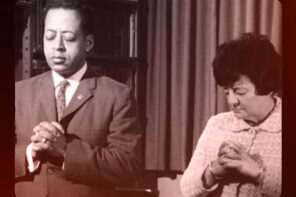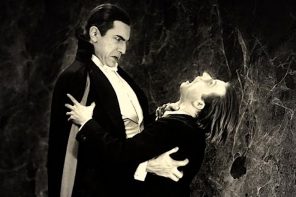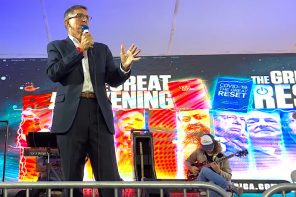“A big problem with all this over the years is that pilots and others have seen things which just don’t add up, but have been afraid to share that information for fear that they would be laughed out of the barracks. And, you know, finally, we’ve gotten to the point where we can have a conversation about this without people, you know, wondering if people need to talk to a therapist or something. And so that’s a big deal.”
– Miles O’Brien, PBS NewsHour, June 27, 2021
On June 25, 2021 the U.S. government, under the Office of the Director of National Intelligence, released a report of UAP sightings by pilots and military personnel. The report, according to journalists like O’Brien and others, creates a safe space within which to discuss matters related to the sightings of UFOs and UAPs (they also informed the public that the term UFO should be replaced with UAP, or unidentified aerial phenomenon). Ironically, this report reversed the multi-year—and quite successful—campaign to debunk all types of witness testimonies regarding UAP sightings. The campaign to debunk testimonies, called Project Bluebook, was also funded by the U.S. government and is outlined in the Robertson Panel Report of 1953.
It’s not incidental that witness testimonies have been integral to the formation of many religious traditions. The plethora of new religions inspired by UAP sightings affirm the importance of witness testimonies to the ongoing unfolding mythology of the UAP. With the release of the Pentagon’s report, there’s not only a new emphasis on witness testimony, but there appears to be a complete shift in official policy regarding these testimonies. The policy, from one of debunking witness reports to one of encouraging them, seems confusing, especially to those who follow UAP lore.
Placed within the context of the exponential growth of civilian-owned technologies, the change in policy isn’t quite as surprising. Social media, cell phones, video, and drone technologies make the sighting and the capture of images of UAPs ubiquitous and unregulated. If, as the report suggests, there’s an element of potential threat to national security concerning UAP sightings, it would be important for the military to regulate information regarding sightings.
But are journalists like O’Brien correct that the public sphere is now a safe space for the confession of UAP witness reports? An examination of the witness discourse in the media reveals that only certain types of witness testimonies should be considered credible. Additionally, new internet algorithms, released during the same week as the report, cast suspicion on user-generated witness testimonies and reports.
The authoritative text of military witness testimonies is Leslie Kean’s UFOs: Generals, Pilots, And Government Officials Go On The Record (2010), a New York Times bestseller featuring the testimonies of military personnel who report aggressive engagements with UAPs. The Foreword, written by former White House Chief of Staff and Presidential Counselor John Podesta, forms, perhaps unwittingly, a specific framework for interpreting witness testimonies. He writes:
“I’m skeptical about many things, including the notion that government always knows best, and that the people can’t be trusted with the truth. We have statements from the most credible sources – those in a position to know – about a fascinating phenomenon, the nature of which is yet to be determined.”
Podesta’s statement simultaneously disparages members of the government who know about UAPs, yet states that government officials “in the know” will inform Americans of the truth. His statement is either ironic or incoherent. Additionally, posing the question of whether people are, or are not, “ready for the truth” suggests that extraterrestrials are indeed real, but that people just aren’t yet ready to know it.
In the contemporary social climate this is exactly how military witness testimonies function—they suggest that the classified and unreleased version of the Pentagon report reveals that UAPs are indeed extraterrestrial. The unclassified public report is completely neutral on this point, but the public testimonies are not. What remains concealed within classified documents then, is revealed through witness testimonies. The testimonies are unequivocal: we are not alone in the universe.
Two days after the unveiling of the report, former NASA astronaut Bill Nelson volunteered his own testimony that humans are not alone in the universe. Media accounts of Nelson’s statements reveal that he had read the classified version of the report, giving him inside information that would influence the interpretations of any statements he would make about UAP phenomena.
Scholars of religion are among those who understand the importance of witness testimonies in the formation of religions. Raelism and The Nation of Islam, for example, were formed from the UFO/UAP testimonies of their founders. A cursory review of UAP literature, both primary sources by witnesses, as well as secondary literature by academics, reveals overt religious and often apocalyptic themes in UAP witness reports. Extraterrestrials are believed to be technologically advanced and are often thought to be supportive of humans’ best interests.
Harvard researcher Dr. John Mack’s bestselling book Abduction: Human Encounters with Aliens (1994) featured the testimonies of people whose encounters with alleged extraterrestrials are best characterized as beneficial and spiritual, if frightening. Current UAP military narratives counter the testimonies found in books like Mack’s. They’re replaced with the specter of the reality of extraterrestrials and their danger to humans.
The UFO/UAP narrative is a belief system that suddenly, with the release of the Pentagon Report, is supported by military witness testimonies. A new development in the vetting of witness testimonies includes internet algorithms related to search engines like Google. After the report was released, though ostensibly unrelated, Google reported a new process of vetting the credibility of user content; that is, videos and photographs uploaded by users of the internet. Coincidentally the video documenting Google’s new algorithm uses UAPs as an example.
According to coverage of the new algorithm, “Google will warn people when search results could be unreliable.” The example Google uses of unreliable information, shown as the result of a search on a phone, reads, “ufo filmed traveling 106 mph.”
This new algorithm will allow regulation of user generated witness testimonies. We’ve had witness testimonies for a long time. Is it really suddenly okay to talk about UAPs? Closer examination of this question reveals that it is only okay to talk about certain sightings—those ensconced within a military framework, and new algorithms will make it easier for internet search providers to vet civilian generated UAP reports.
The consolidation of knowledge of UAPs to military witness testimonies, and the use of internet algorithms to monitor non-military testimonies represents a new development in this new religiosity of the UAP, what Carl Jung has termed “a new mythology.” For scholars and students of religion, this provides a rich opportunity to examine the formation of new systems of belief and practice coalescing around powerful cosmological questions, otherwise known as religions.





